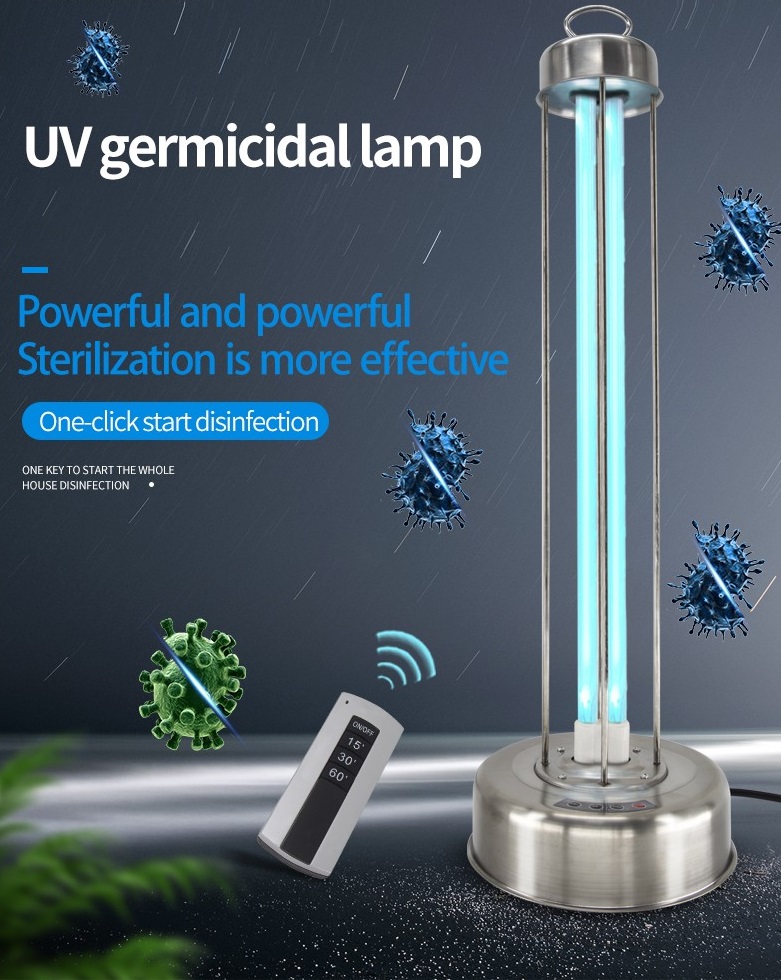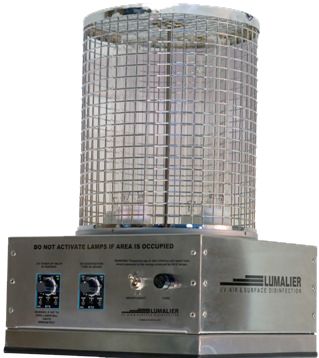Discover the Perks of UV Surface Disinfection: Efficient and Eco-Friendly Hygiene
Discover the Perks of UV Surface Disinfection: Efficient and Eco-Friendly Hygiene
Blog Article
UV Disinfection: The Cutting-Edge Innovation Changing Cleanliness Practices
In the world of sanitation methods, one technology has actually emerged as a game-changer: UV sanitation. From health care settings to food handling, UV disinfection is making its mark in different industries.
Exactly How UV Disinfection Functions
UV disinfection functions by utilizing ultraviolet light to damage or inactivate microbes, supplying a highly efficient and chemical-free approach of cleanliness. This technology uses the power of short-wavelength UV-C light, which is capable of harming the DNA and RNA of microorganisms, thus rendering them not able to trigger and replicate injury.
The process begins with the installment of UV disinfection systems, which contain UV lights that send out UV-C light. These lamps are purposefully placed in areas where microbial contamination is a problem, such as water treatment plants, healthcare facilities, laboratories, and food handling centers.
When microorganisms are subjected to UV-C light, the photons permeate their cell walls and get to the DNA and RNA within. The high-energy UV-C photons interfere with the genetic material by producing bonds in between surrounding nucleotides, causing the development of thymine dimers. These dimers prevent the bacteria from duplicating, providing them safe.
UV sanitation is highly effective against a large array of microorganisms, including infections, germs, and parasites. It is particularly efficient against waterborne microorganisms like E. coli, Giardia, and Cryptosporidium. In addition, UV sanitation is a chemical-free approach, getting rid of the requirement for possibly harmful disinfectants and reducing the risk of hazardous disinfection by-products.
Advantages of UV Sanitation
UV sanitation supplies countless advantages in the field of sanitation, making it a highly preferred method for efficiently eliminating damaging microbes. One of the key advantages of UV sanitation is its capacity to offer a chemical-free solution. Unlike typical sanitation methods that count on chemicals, UV sanitation makes use of ultraviolet light to damage the DNA of bacteria, making them not able to duplicate and create infections. This not only eliminates the demand for potentially hazardous chemicals but likewise reduces the risk of chemical residue on surface areas.
UV disinfection is likewise highly flexible in its applications. It can be utilized in various settings, including healthcare facilities, institutions, food handling facilities, and water treatment plants. UV disinfection systems can be easily incorporated right into existing hygiene methods, supplying an extra layer of security against infectious diseases.
Along with its performance and convenience, UV sanitation is likewise eco-friendly. It does not produce any dangerous results or deposits, making it a risk-free and sustainable technique for hygiene - uv surface disinfection. Furthermore, UV sanitation needs very little maintenance and has a lengthy life-span, causing expense savings in the long run.
UV Sanitation in Healthcare Settings
In medical care setups, UV disinfection has actually emerged as a cutting-edge technique for effectively removing dangerous microorganisms. The usage of UV light to disinfect surface areas and equipment has actually gained appeal due to its capability to provide an extra layer of protection versus pathogens. UV sanitation functions by producing ultraviolet light at a details wavelength that is deadly to microorganisms, viruses, and various other microbes. This innovation supplies a number of benefits in medical care settings.
First of all, UV sanitation is a non-chemical approach, making it an environmentally pleasant alternative contrasted to typical sanitation techniques that usually include the usage of extreme chemicals. Making use of UV light gets rid of the demand for chemical anti-bacterials, reducing the risk of damaging deposit or chemical direct exposure to both people and medical care employees.
In addition, UV sanitation is very reliable in eliminating a vast array of microbes, consisting of drug-resistant microorganisms such as MRSA and C. difficile. It gives a reputable and constant disinfection process, making certain that all surface areas and devices are completely sanitized, even in hard-to-reach areas.

UV Disinfection in Food Handling
The application of UV disinfection expands past healthcare setups and discovers significant worth in the realm of food processing. uv surface disinfection. UV sanitation technology is coming to be significantly prominent in the food sector due to its capability to successfully remove unsafe microorganisms and enhance food safety and security
One of the primary benefits of UV sanitation in food handling is its capability to target a wide variety of microorganisms, including molds, bacteria, and infections. By utilizing UV light at particular wavelengths, it is possible to disrupt the DNA and RNA of these pathogens, providing them incapable to create or duplicate injury. This innovation can be put on different stages of the food processing chain, including surface area sanitation, tools sanitation, and water therapy.
UV sanitation gives a chemical-free and non-thermal method of sterilizing food items. Unlike traditional sanitation approaches that count on chemicals or heat, UV innovation does not leave any kind of residue or alter the taste, texture, or dietary worth of the food. This makes it an ideal remedy for markets that require rigorous adherence to high quality standards.
In addition, UV disinfection systems are very easy to install and operate, requiring marginal maintenance. They can be incorporated right into existing processing lines without creating considerable interruptions to the manufacturing process. Additionally, UV systems have a fast treatment time, permitting continuous handling and decreasing downtime.
The Future of UV Sanitation

One location where UV disinfection is expected to make significant developments is in the area of health care. With the surge of antibiotic-resistant microorganisms and the need for much more effective disinfection techniques, UV light has the prospective to play a critical duty in reducing healthcare-associated infections. UV sanitation systems can be made use of to sanitize surface areas, devices, and even the air in health care facilities, helping to avoid the spread of damaging microorganisms and enhance client safety.
Another sector that can gain from improvements in UV sanitation modern technology is the food sector. UV light has actually already verified to be an efficient method for decontaminating food products and reducing the threat of foodborne ailments. As modern technology boosts, we can anticipate to see a lot more reliable and economical UV disinfection systems being executed in food handling plants, ensuring that the food we eat is safe and without hazardous germs.
Verdict
In verdict, UV sanitation is a sophisticated technology that is transforming hygiene methods in healthcare setups and food processing. By making use of UV light to eliminate or shut off microorganisms, it uses numerous benefits such as efficiency, performance, and safety. With recurring developments in this area, UV disinfection holds excellent potential for the future of cleanliness, giving a lasting and reputable remedy for maintaining clean and hygienic settings.
UV sanitation is a chemical-free method, getting rid of the demand for possibly damaging anti-bacterials and lowering the risk of damaging sanitation byproducts.
Unlike traditional disinfection techniques that depend on chemicals, UV sanitation makes use of ultraviolet light to damage the DNA of microorganisms, rendering them unable to recreate and trigger infections. Unlike standard sanitation approaches that count on chemicals or warmth, UV technology does my site not leave any type of deposit or change the preference, structure, or dietary worth of the food. As technology improves, we can expect to see much more effective and cost-efficient UV disinfection systems being executed in food processing plants, guaranteeing that the food we eat is safe and free from dangerous germs.
In final thought, UV disinfection is an innovative innovation that is changing hygiene techniques in medical care setups and food processing.
Report this page